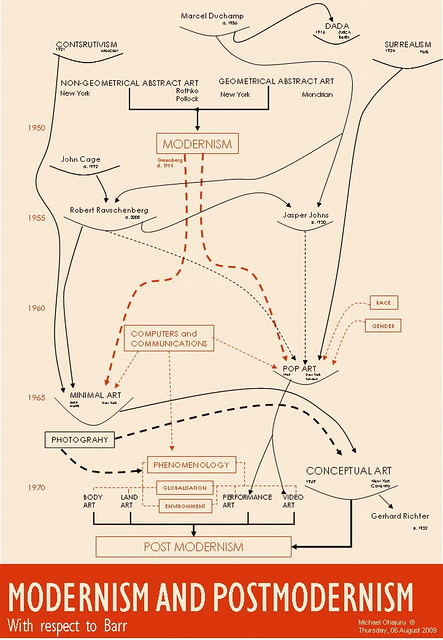Read a piece in the Times the other day about a South African mountain biking photograph by Gary Parkin part of The Times "Story Behind The Picture" series it immediately made me think of Rothko modernism colour fields and Rodchenko black and white Constructivist photographs.
This is what I saw......what do you think?
Wednesday 21 October 2009
Saturday 10 October 2009
Dada, Che & Obama Say Trust Me
When I saw the ex-Dadist John Heartfiels’s photomontage cover for the June 1934 issue of the communist magazine AIZ Arrbeiter Illustrierte Zeitung (AIZ: Workers Illustrated Paper) en titled ‘A New Man – Master of a New World. I was struck how similar the pose was to the picture of Che Guevara on thousands of student walls and T-shirts and Shepherd Fairey’s HOPE poster of Presidential candidate Barrack Obama both have become icons.
John Heartfeild the ex-Dadaist produced a series of monthly photomotages montages
Heartfield positioning the worker as a man of vision in a new age at time of rising unemployment and political strife
See for yourself ,c lick here.
All three have men staring upwards with gravitas as a friend said a calm-assertive "trust me" look.
Having identified the pose the challenge is now to find when the pose was first used. I suspect the Romans may have got their first as they have in so many things; they were the masters at propaganda.
Picture credits
1930s
Plate 5 from
Gaiger, J.M., Wood P. (eds) (2003) Art of the Twentieth Century – A Reader, New Haven and London, Yale University Press
1960s
Alberto Korda took the iconic picture of Che Geuvara on March 5, 1960 while working for the Cuban newspaper Revolución.
2000s
Shepherd Fairey’s 2008 HOPE poster for the Obama presidential campaign was based on a copyrighted photograph taken in April 2006 by Mannie Garcia while on assignment for the Associated Press (AP)
John Heartfeild the ex-Dadaist produced a series of monthly photomotages montages
Heartfield positioning the worker as a man of vision in a new age at time of rising unemployment and political strife
See for yourself ,c lick here.
All three have men staring upwards with gravitas as a friend said a calm-assertive "trust me" look.
Having identified the pose the challenge is now to find when the pose was first used. I suspect the Romans may have got their first as they have in so many things; they were the masters at propaganda.
Picture credits
1930s
Plate 5 from
Gaiger, J.M., Wood P. (eds) (2003) Art of the Twentieth Century – A Reader, New Haven and London, Yale University Press
1960s
Alberto Korda took the iconic picture of Che Geuvara on March 5, 1960 while working for the Cuban newspaper Revolución.
2000s
Shepherd Fairey’s 2008 HOPE poster for the Obama presidential campaign was based on a copyrighted photograph taken in April 2006 by Mannie Garcia while on assignment for the Associated Press (AP)
1968 Art Critic Quotes Views of 1850’s Racialist as Truth
While revising the subject of Primitivism for my exam next week I looked up the word up in a book I’d brought ages ago. The author was Sir Herbert Read (1893–1968) , the book was the ‘new and revised’ 1968 edition of his pocket book The Meaning of Art a standard introductory text to art based on articles for the now defunct magazine The Listener – the BBC’s weekly literary journal. On page 76 he describes the ‘Negro’ as follows
I could not believe it 1968 and he was quoting Count Joseph Arthur De Gobineau (1816-82). Gobineau - believed that
The 1960s in art was a revolutionary time as there was the shift from modernism to postmodernism set against the historical backdrop of the Vietnam War, the rise of Feminism , Decoloniastion, Black power and swinging Sixties.
Yet here was a noted art critic writing for a prestigious journal , at the time, quoting the views on race almost century old, the mind boggles and the jaw drops.
But this is art history opinions and views with the occasional fact no matter how old and disputed.
Notes
[1] Read, pg 71
[2] King pg 103
References
King, C. (ed) (1999) Views of Difference: Different Views of Art, New Haven and London, Yale University Press
Read, H. (1968), The Meaning of Art, London, Faber & Faber
Indeed it has been said with truth by Count Gobineau the Negro possess in the highest degree that sensual faculty which our civilised instincts tends to destroy, but without which no art is possible. It is certainly true that from a study of art of the Negro and Bushman we are led to an understanding of art in its most elemental forms and the elementary is always the most vital[1]
I could not believe it 1968 and he was quoting Count Joseph Arthur De Gobineau (1816-82). Gobineau - believed that
Inequality between the races was immutable- the superior. Of the three great graces in human history – the superior Aryan (white ) race the inferior yellow and black- the last two Untermenschen (literally , under peoples) enjoyed a propondence of numbers. [2]
The 1960s in art was a revolutionary time as there was the shift from modernism to postmodernism set against the historical backdrop of the Vietnam War, the rise of Feminism , Decoloniastion, Black power and swinging Sixties.
Yet here was a noted art critic writing for a prestigious journal , at the time, quoting the views on race almost century old, the mind boggles and the jaw drops.
But this is art history opinions and views with the occasional fact no matter how old and disputed.
Notes
[1] Read, pg 71
[2] King pg 103
References
King, C. (ed) (1999) Views of Difference: Different Views of Art, New Haven and London, Yale University Press
Read, H. (1968), The Meaning of Art, London, Faber & Faber
Subscribe to:
Posts (Atom)
